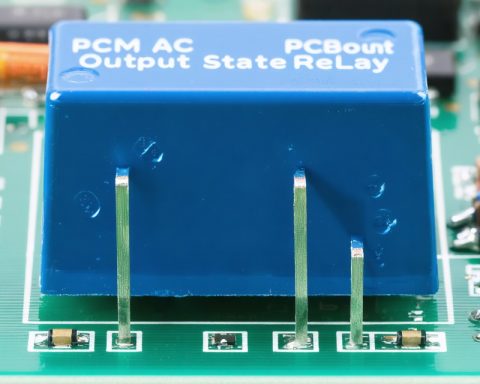- The South Carolina State Fair features a notable attraction: the “Columbia” rocket, a relic of the Cold War era.
- Originally an intermediate-range ballistic missile, it was repurposed as a monument by the U.S. Air Force in the 1960s.
- The rocket symbolizes humanity’s reach for the stars and is linked to Werner von Braun, a key figure in rocket technology.
- Von Braun’s legacy includes contributions to NASA’s space programs and a controversial history with Germany’s V-2 program.
- The rocket serves as a tribute to human ingenuity and the ability to reclaim and repurpose historical artifacts.
- The South Carolina State Fair intertwines past and present, offering a unique blend of history, tradition, and imagination.
- The rocket is a poignant reminder of human progress and the boundless curiosity driving it.
As autumn’s crisp breeze sweeps across Columbia, South Carolina, the unmistakable hum of the state fair resonates through the city—a symphony of laughter, sizzling kettle corn, and nostalgic carnival tunes. Yet, amidst the whirl of sights and sounds, an unexpected sentinel stands guard at the fair’s north entrance: a rocket, a towering relic of humanity’s aspirations for the stars.
This particular rocket, affectionately named “Columbia,” is no ordinary artifact. It traces its lineage back to the fervent ambitions of the Cold War era. Once an intermediate-range ballistic missile, this imposing structure found itself retired and reimagined, gifted by the U.S. Air Force during the 1960s to stand as a monument to innovation and exploration.
Even in its static silence, the rocket evokes a story that starts far beyond the fairgrounds’ boundaries. It is intimately linked to the legacy of Werner von Braun, a visionary in rocket technology. Von Braun’s journey from Germany, where he was pivotal to Nazi Germany’s V-2 rocket program, to his contributions in America, where he propelled NASA’s space endeavors, underscores a dramatic arc of scientific progress and moral complexity.
His work at the Marshall Space Flight Center in Huntsville, Alabama, where he refined rockets that would eventually send astronauts to the moon, marks a significant chapter in human ingenuity. However, this legacy is a tapestry woven with both the extraordinary achievement of space exploration and the darker shades of its wartime origins.
Back in Columbia, the stationed missile transcends its original martial purpose. As thousands walk beneath its shadow each year, it serves as both a marker of the past and a beacon of human capability to repurpose and dream anew. Fairgoers weave their own stories into the spectacle, perpetuating traditions as rich and varied as the sights around them—from bucketfuls of sugary funnel cakes to whimsical rides that twist and twirl under a canopy of stars.
For generations, the South Carolina State Fair has been more than an event; it’s a living tapestry of American life decorated with memories and moments. The rocket is a silent participant in these stories, reminding us of the strides humanity has made and the unyielding curiosity that propels us forward.
So, as you stroll by this magnificent monument of metal and dreams on your next fair visit, pause to reflect. Beyond its rusted fins and imposing frame lies a quintessential reminder: human ingenuity knows no bounds, and even the grandest of ambitions can find an unlikely home in the most terrestrial of places.
Discover the Untold Stories Behind Columbia’s Fairground Rocket
The South Carolina State Fair Rocket: A Monument to Innovation and History
As Columbia, South Carolina, embraces the vibrant hues of autumn, the South Carolina State Fair comes alive, filling the air with infectious laughter, the aroma of kettle corn, and the joy of carnival tunes. Amidst this delightful chaos stands an unexpected sentinel—the “Columbia” rocket. However, the towering relic, once a Cold War-era intermediate-range ballistic missile, is more than just a fairground attraction. It represents the remarkable journey of human ingenuity and transformation.
The Rocket’s Historical Significance
– Cold War Legacy: Originating from a tense period of global history, the rocket was employed as a tool in geopolitical strategy, embodying the era’s pervasive sense of urgency and competition.
– Werner von Braun’s Influence: Central to the rocket’s story is Werner von Braun, a visionary whose life reflects both the marvels of space exploration and the complex moral landscape of scientific endeavors. His pivotal role at NASA and the Marshall Space Flight Center helped propel humanity towards a new frontier.
– Transformation and Repurposing: Gifted by the U.S. Air Force in the 1960s, the rocket stands today not for its martial beginnings but as a monumental tribute to repurposing and preservation.
Exploring the Fairground Rocket’s Modern Relevance
– Educational Value: The rocket provides an educational opportunity, encouraging fairgoers to learn about historical milestones in rocket technology and to reflect on how innovations of the past shape our present and future.
– Symbol of Peaceful Progress: It serves as a marker of transformation from an instrument of war to a symbol that celebrates peace, education, and the endless potential of human creativity.
Real-World Applications and Discussions
– Life Hacks for Fairgoers: Bring binoculars for a closer look at the rocket’s intricate details. Photographers will find unique angles for capturing its grandeur, especially during the golden hours of sunrise or sunset.
– Market Forecasts & Industry Trends: The tourism draw from historical artifacts like the Columbia rocket highlights ongoing interest in aerospace history and could lead to increased tourism and education-focused attractions in the area.
– Controversies & Limitations: While celebrating progress, it’s essential to maintain awareness of the historical context and the ethical debates surrounding figures like von Braun, whose early work contributed to weapons of war.
– Security & Sustainability: As an iconic piece of history, the rocket’s preservation and maintenance are crucial, encouraging discussions about sustainable methods for conserving historical structures exposed to outdoor elements.
Quick Tips for Your Next Fair Visit
– Reflect on History: Take a moment to think about how world events have shaped the present. Consider the broader implications of scientific progress and its dual potential for both great good and harm.
– Plan Your Visit: The fair’s timing in autumn offers ideal weather for exploration. Aim to visit during weekday mornings to avoid crowds for a more immersive experience.
– Engage with Exhibits: Explore related exhibits that offer context to the rocket’s history, such as displays on the Cold War, NASA’s early missions, and the local impact of historical donations.
To learn more about Columbia and the rich history surrounding its landmarks, visit City of Columbia.
By understanding the past, we not only appreciate the present but also pave the way for a future filled with innovation, peace, and endless possibilities. Let the fairground rocket inspire your own dreams and ambitions.








